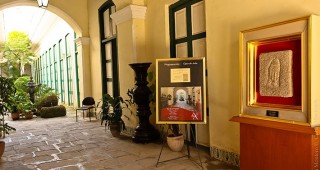Known by many as Iglesia de Reina, Cuba’s tallest and perhaps most beautiful church rises in the midst of the urban landscape as one of the most accomplished religious constructions in Cuba in terms of architecture. Its notable 77-meter tall tower, topped by a 4-meter tall bronze cross, with 32 gargoyles and a variety of statuettes. The inside is lit by 69 spectacular stained-glass windows. It can be seen from several spots in Havana.
Construction began on August 7, 1914 under Jesuit architect Brother Luis Gogorza and after its completion, the church was inaugurated by Bishop Pedro González Estrada on May 3, 1923. Its pointed arch, ogival vaults, narrow walls, large windows and notable stained-glass windows (that represent the life of Jesus Christ and the Virgin Mary, as well as passages from Loyola’s and other Jesuit saints’ life), are all gothic stylistic elements.
This church has three naves and three doors. The floor of the central nave consists of stone and glass tiles, and has the Greek letters alpha and omega engraved on it by the entrance. From the street (Reina), you can see the image of the Sacred Heart carved in wood and a group of five angels with their wings spread to form a baldachin. By the altar, there is a bronze plaque where Jesus is portrayed as a slaughtered lamb. The two lateral naves form a Latin cross, where there is also an image of the Virgen de la Caridad del Cobre, patron saint of Cuba. In addition, the parish has one of Cuba’s fanciest organs. Several distinguished architects have praised this church’s façade, but have also criticized its location and interior.















 $48 - $69
$48 - $69








